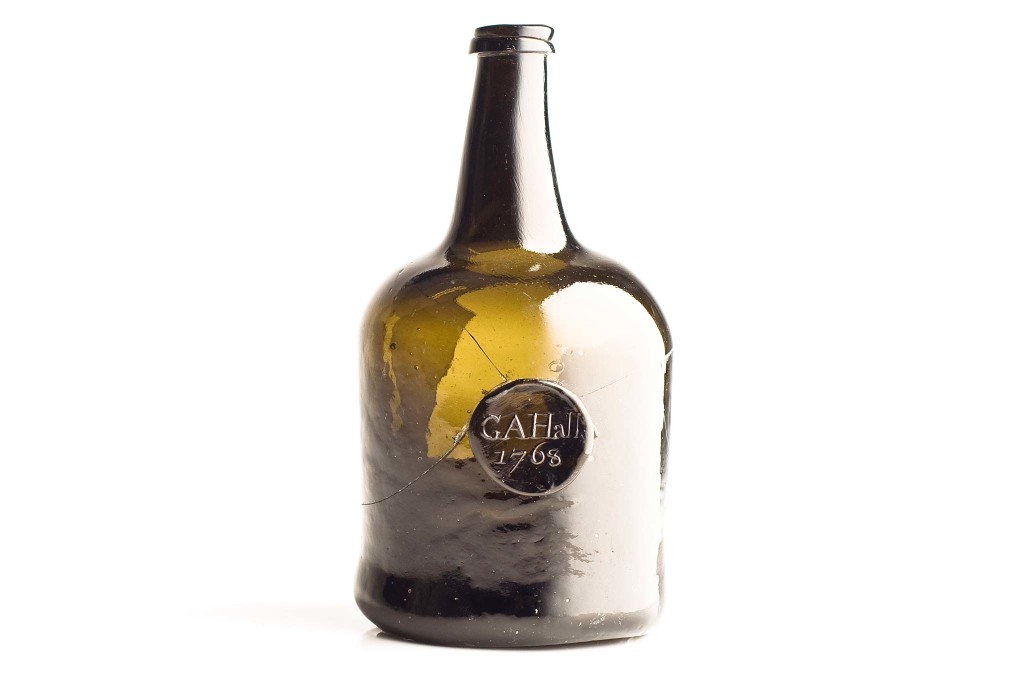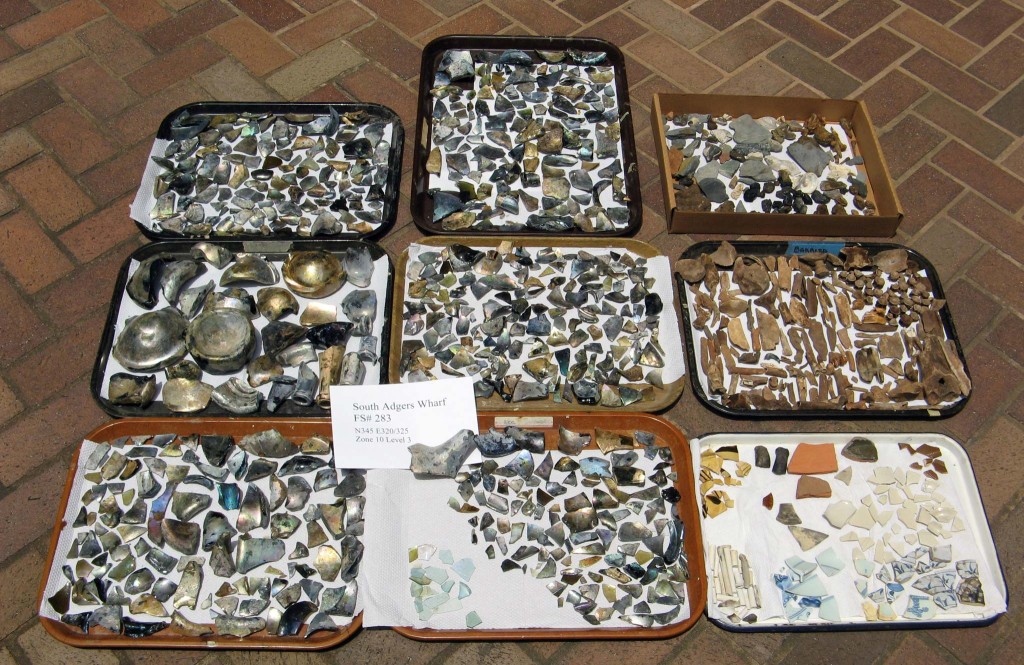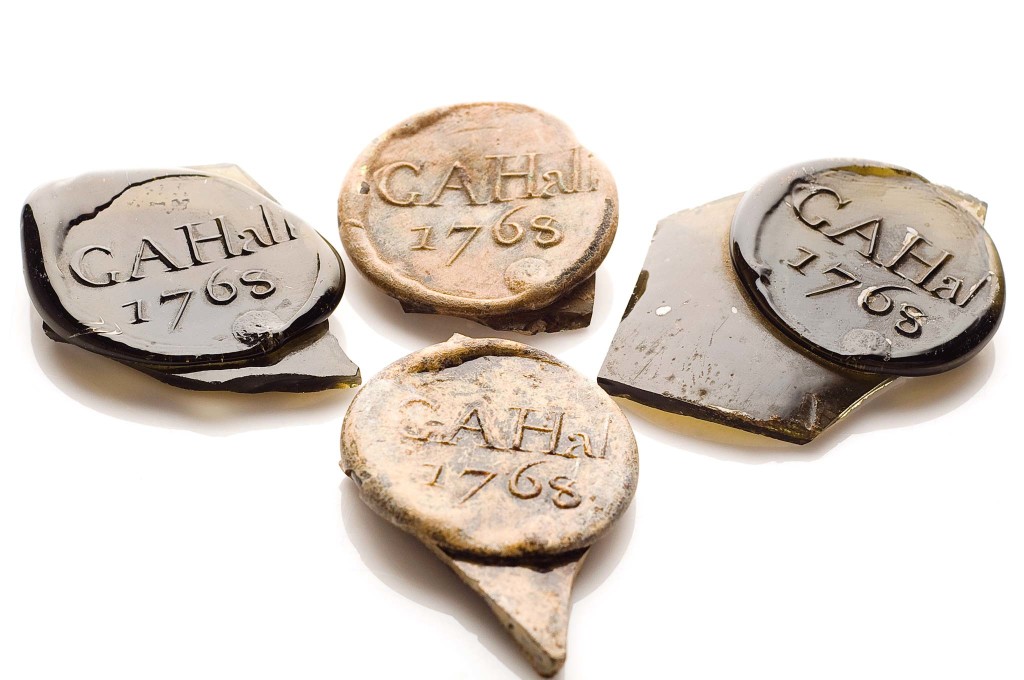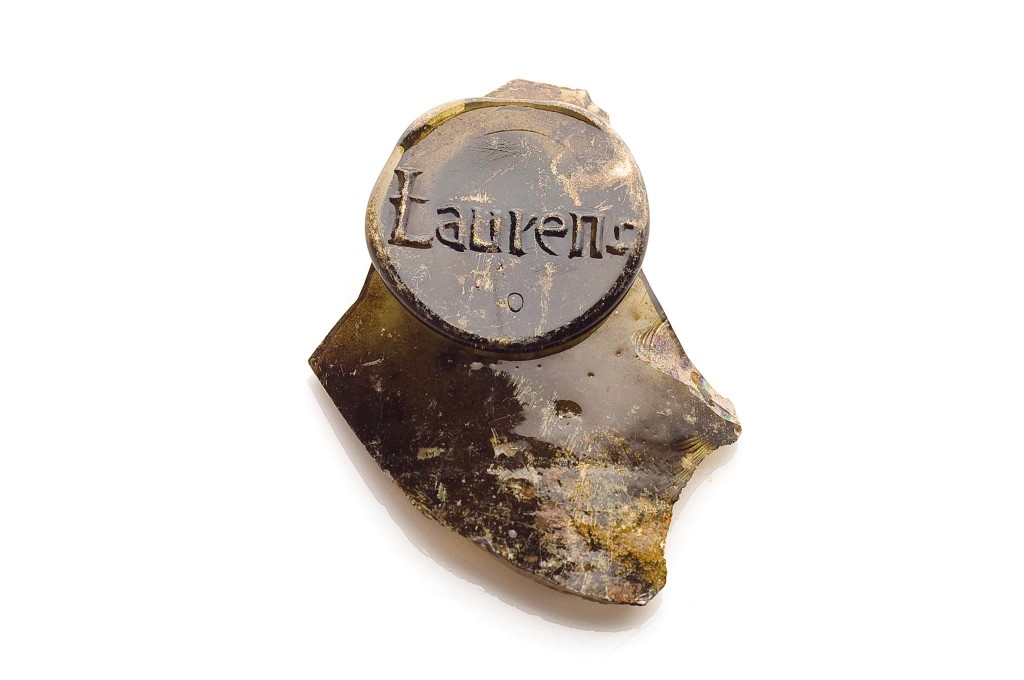Drinking Wine in Charleston
Charleston’s popular Wine+Food festival is fairly new, but drinking wine in Charleston is not. Archaeological sites, and the Museum’s archaeological collections, are filled with green glass bottles that once held wines. Heavy glass bases and hand-formed necks join thousands of shards of glass. The waterfront was particularly loaded with bottle glass, as revealed in the dig at South Adger’s Wharf in 2008.
Sometimes, green glass bottles were affixed with a seal bearing the name or initials of the owner. Archaeologists view an artifact bearing the owner’s name as the holy grail, a rare find that links inference with documented occupants. The South Adger’s Wharf dig produced a bottle seal reading “Laurens”, likely from the cellar of wharf co-owner John Laurens. The Heyward-Washington yard produced our largest collection, all identical and belonging to “G. A. Hall 1768.” George Abbott Hall was the brother-in-law of Thomas Heyward; the men’s wives were sisters. Mrs. Hall lived on the property with Mrs. Heyward during the British occupation of the town during the Revolution. The Heyward-Washington yard produced four bottles with seals affixed to their sides and four additional seals, all identical.
Sealed wine bottles evidently traveled with their patrons. The Simmons-Edwards property produced a bottle monogrammed for “MBrewton,” Brewton’s own property did not. The only wine seal recovered from the Miles Brewton House, from the basement hallway, in fact, was emblazoned “C Pinkney.” This is the seal of Charles Pinckney, owner of Snee Farm plantation in Mt. Pleasant. Excavations at Snee Farm, now a National Park Service property, produced an identical seal, with the same incorrect spelling of his name, as well as two others monogrammed for Mr. Pinckney in a different font and with a different spelling. Perhaps Mr. Pinckney sent a bottle of wine to Miles Brewton as a gift. David Hancock suggests that gifts of wine were common in the eighteenth century, drawing on the “social and pleasurable connotations of wine and drinking.
The gentlemen’s bottles were likely filled with wines made on the Atlantic island of Madeira, ideally situated for the trans-Atlantic trade. Madeira was producing wine in the early 17th century and, by the 1660s, was producing little else. Maderia wines do not spoil in hot weather; rather, the wine improves. Wallowing in the hold of a ship that crossed the Atlantic and wandered through the West Indies resulted in better wine. Madeira is also resistant to micro-organisms that damage other wines when exposed to air. The best vintages age well in cask or bottle, and they improve decade after decade. The hardihood and heat resistance made madeiras a staple of British colonial plantations. Charlestonians often stored their madeira in the warm attics of their townhouses.
The personalized bottles prized by gentlemen of the late eighteenth century provide graphic evidence of the movement and transfer of material items, before they became archaeological material culture. The bottle seals in the Museum’s archaeological collections – those belonging to G.A. Hall, Miles Brewton, John Laurens, Charles Pinckney, and others, are featured in a new reference work by British scholar David Burton. “Antique Sealed Bottles 1640-1900: and the Families that Owned Them” is a lavishly-illustrated three-volume reference that covers sealed bottles on a global scale. We are pleased to have our collections part of this massive work.





